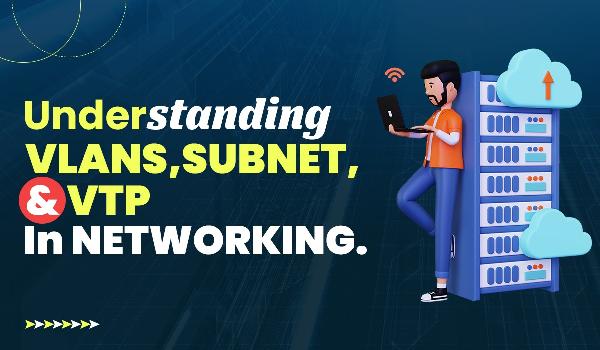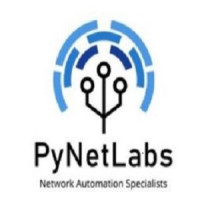Understanding VLANs, Subnets, and VTP in Networking

Strong 8k brings an ultra-HD IPTV experience to your living room and your pocket.
In the world of computer networking, the concepts of VLANs, subnets, and VTP play crucial roles in ensuring efficient and organized communication within and between networks. Each of these concepts serves distinct purposes and operates at different layers of the OSI model, making them essential tools for network administrators. In this article, we will delve into what VLANs, subnets, and VTP are, how they differ, and why they are vital in modern networking, including a brief mention of vlan vs subnets.
VLAN (Virtual Local Area Network):
A VLAN, short for Virtual Local Area Network, is a fundamental component in modern network design. It is a logical segmentation of a physical network into smaller, isolated networks. This segmentation allows network administrators to group devices together based on common characteristics, such as departments, functions, or security requirements, without the need for physically separate networks. VLANs operate at the data link layer (Layer 2) and are associated with Ethernet switches.
Here are some key points to understand about VLANs:
Logical Segmentation: VLANs provide a logical separation within a physical network, making it possible to have different virtual networks within a single physical infrastructure.
Broadcast Domains: Devices within the same VLAN belong to the same broadcast domain. This means that broadcast traffic is limited to devices within the same VLAN, reducing unnecessary broadcast traffic on the network.
Isolation: VLANs offer network isolation, which can enhance security by preventing devices in one VLAN from directly communicating with devices in another VLAN, unless explicitly allowed.
Flexibility: Devices in the same VLAN can be geographically dispersed across the network but are logically grouped together. This flexibility is particularly useful in complex network environments.
Efficiency: VLANs improve network efficiency by reducing broadcast domains and optimizing traffic flow. They enable better bandwidth management and traffic isolation.
Subnet
A subnet, on the other hand, deals with IP addressing and routing. It is a division of an IP network into smaller, more manageable segments. Subnets operate at the network layer (Layer 3) and are used to organize and control IP address allocation within a network.
Key aspects of subnets include:
IP Address Management: Subnets help in organizing IP addresses efficiently, which is essential for IP routing. Devices within the same subnet share the same network address portion of their IP addresses.
Routing: Subnets are the foundation for IP routing. Routers use subnet information to determine how to forward packets between different subnets or networks.
Network Isolation: Subnets, by design, separate devices into distinct IP address ranges, making it possible to isolate different parts of a network from each other, enhancing security and network management.
Hierarchical Structure: Subnets can be organized hierarchically, with larger subnets containing smaller subnets, allowing for scalable network designs.
CIDR Notation: Subnets are often specified using CIDR (Classless Inter-Domain Routing) notation, which includes the network address and the subnet mask, e.g., 192.168.1.0/24.
VLAN vs. Subnet:
Understanding the differences between VLANs and subnets is essential for effective network design and management:
Layer of Operation: VLANs operate at Layer 2 (data link layer), while subnets operate at Layer 3 (network layer). VLANs deal with Ethernet frames and switch-based isolation, while subnets involve IP address allocation and routing.
Traffic Isolation: VLANs primarily isolate traffic at the switch level, while subnets isolate traffic at the network and routing level. Devices in the same VLAN can be in different subnets, and devices in different VLANs can be in the same subnet.
Security and Organization: VLANs are often used for security and organization within a local network. Subnets are primarily used for routing and controlling traffic between different networks or network segments.
Interplay: It's common to have multiple VLANs within a single subnet, but each VLAN typically requires a separate subnet if you want them to communicate with each other.
VTP (VLAN Trunking Protocol):
In the networking world, VTP in networking, or VLAN Trunking Protocol, is a proprietary protocol used for managing VLAN configurations across a network of Cisco switches. VTP simplifies the administration of VLANs by allowing changes made on one switch to be automatically propagated to other switches within the same VTP domain.
Key points about VTP include:
Centralized Management: VTP centralizes the management of VLAN configurations, reducing the need to configure VLANs individually on each switch.
Consistency: VTP helps ensure consistency in VLAN configurations, reducing the likelihood of misconfigurations, which can lead to network issues.
VTP Modes: VTP operates in three modes: server, client, and transparent. The server mode is used to make changes to the VLAN database, while the client mode synchronizes with the server. The transparent mode allows a switch to pass VTP updates but does not participate in VTP itself.
VTP Domains: Switches within a VTP domain share VLAN information. However, it's important to configure the correct VTP domain on each switch to ensure they are synchronized.
Frequently Asked Questions (FAQs):
What is the purpose of VLANs?
VLANs are used to logically segment a network to improve organization, security, and traffic management.
How do VLANs differ from subnets?
VLANs operate at Layer 2 and deal with network segmentation at the switch level, while subnets operate at Layer 3 and handle IP address allocation and routing.
Can devices in different VLANs communicate with each other?
Devices in different VLANs typically cannot communicate directly unless specific routing or firewall rules allow it.
What is VTP, and why is it used?
VTP (VLAN Trunking Protocol) is used in Cisco networks to manage VLAN configurations efficiently and ensure consistency across switches within the same VTP domain.
What is inter-VLAN routing?
Inter-VLAN routing is the process of allowing communication between devices in different VLANs using a router or Layer 3 switch.
Conclusion
In the ever-evolving landscape of computer networking, VLANs, subnets, and VTP are fundamental concepts that network administrators must grasp. VLANs offer logical network segmentation at the data link layer, subnets provide IP network segmentation and routing at the network layer, and VTP streamlines VLAN management in Cisco environments. These concepts are crucial for efficient network design, management, and troubleshooting. By understanding their roles and differences, network professionals can create secure, scalable, and well-organized network infrastructures that meet the demands of modern communication.
Note: IndiBlogHub features both user-submitted and editorial content. We do not verify third-party contributions. Read our Disclaimer and Privacy Policyfor details.



